The Toronto International Film Festival (TIFF) was a strange one this year. Critical opinion never really coalesced around any clear winners (although the public had a clear favorite). And hardly any critic we spoke to was beating the table about how much they adored any one film they had seen. Still, Movies Editor Michael Dunaway and Chief Film Critic Tim Grierson found plenty to like at the 2015 edition of the fest. Here are our twenty favorites.
20. The Family Fang
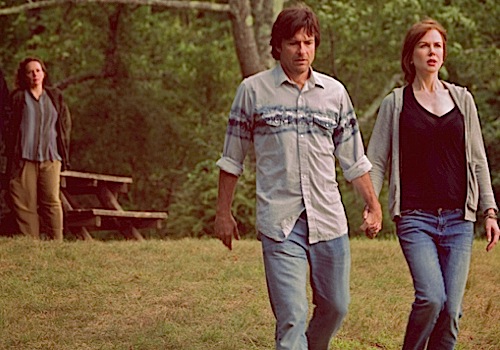
I’m not sure where all the hate came from for Jason Bateman’s directorial debut, Bad Words; I found it vulgar, charming, hilarious and kind of sweet. Nevertheless, I’m happy to see critics hailing his second feature, The Family Fang. Based on the wonderful novel by Kevin Wilson, it’s the story of the adult children (Bateman and Nicole Kidman) of two famous performance artists (Christopher Walken and Broadway star Maryann Plunkett). Their relationship with their parents is so troubled, their mistrust of their parents’ manipulations so profound, that when the parents go missing, the children must decide if they’re really in danger, or if it’s just another elaborate piece of art. Of special note are the flashbacks to public art spectacles performed in the kids’ childhood, illuminating the roots of many of the issues with which the present-day story is concerned. It’s a smart-assed, guarded and yet somehow very earnest look at how parents and children damage each other, and what happens after that. Which means, of course, that it’s very, very Jason Bateman. —Michael Dunaway
19. Un Plus Une

Claude Lelouch’s two-French-lovers-in-India romantic dramedy has many failings. The heroine is often difficult to like, much less love. The plot is a bit on-the-nose, as our two Western leads, each in a sort of spiritual malaise, go on a pilgrimage to see an Indian mystic to solve all their problems. And Dujardin sometimes goes a bit overboard with his, well, Dujardin-ness. But oh, when it works. That same script whose plot points can seem hackneyed and stereotypical has such wondeful wordplay at points. And when Dujardin hits the mark, there’s no one who can do what he does. The film isn’t as deep as it thinks it is, and you will roll your eyes more than once, but you’ll also be entertained, and delighted. —M.D.
18. The Devil’s Candy
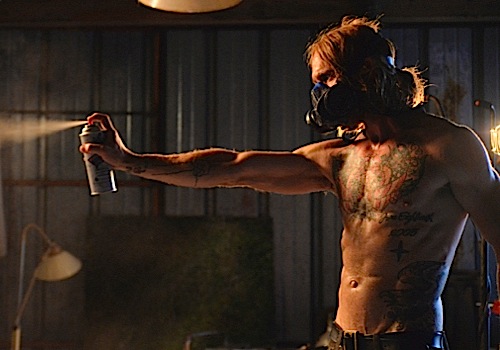
In the six years since making his festival favorite The Devil’s Candy, writer-director Sean Byrne has clearly been thinking a lot about The Shining, perhaps wondering what happened if you told the story from the perspective of a father who didn’t hate his family? That’s a glib, but not entirely inaccurate, distillation of The Devil’s Candy, a superb psychological horror film in which an aspiring painter (Ethan Embry) moves his wife (Shiri Appleby) and kid (Kiara Glasco) into a beautiful new house in the middle of nowhere in Texas—only to learn that the previous tenant (Pruitt Taylor Vince) has some unfinished business with the place. A nightmare extrapolation of every young father’s fears—allusions to rape and death litter the film—The Devil’s Candy is about the demons outside our walls and the ones inside our head, as Embry terrifically portrays a man whose artistic ambitions seem inexplicably linked to the bogeyman out to get his clan. —Tim Grierson
17. In Jackson Heights

Nearing 86, documentarian Frederick Wiseman remains one of our greatest, most vital living filmmakers. In Jackson Heights looks at the Queens neighborhood over three hours, and once you acquiesce to its rhythms, you discover a multicultural world trying to preserve its distinct voices. Reportedly the most diverse neighborhood on the planet—167 languages are spoken there—the Jackson Heights we see coexists in public, but behind closed doors individual groups and interests meet to cultivate their heritage and passions. (Wiseman takes us into belly-dancing classes and different religious ceremonies, a senior citizens’ home and a tutorial for aspiring cab drivers, as well as support groups for transgender men and women.) The result is a melting pot of life in which immigrant tales and small-business owners, gay pride parades and politicians, are all part of the mix. Because Wiseman never editorializes—he avoids talking-head interviews and artificial narratives—In Jackson Heights is as teeming and invigorating as a summer block party. —T.G.
16. Neon Bull

One of our colleagues called Neon Bull “the great discovery of this year’s festival,” and we’re not entirely convinced that he’s wrong. Brazilian director Gabriel Mascaro has come up with a very quick followup to his festival favorite, August Winds, and it walks some of the same territory as that film. Cowboy Iremar (Juliano Cazarre) works on the ranch owned by Galega (Maeve Jinkings), but his real passion is, believe it or not, fashion design. Meanwhile, Galega is a tough, no-nonsense boss who only occasionally takes time to indulge her feminine side (although both times she does so are extremely memorable). If you think Mascaro is playing with gender roles here, you’re right, but that examination always comes second to a more humanistic, almost documentary approach to observing the minutiae of his subjects’ lives. It’s a wonderful combination. —M.D.
15. Born to Be Blue

The long saga of the attempts to bring the life of Chet Baker to the screen has many twists and turns. (Perhaps most famously, Leonardo DiCaprio was attached to one such project for a long while.) Born to be Blue may not end up being the last of those attempts, but it’s an awfully good start. While the young Ethan Hawke might not have been a good fit to play the young Chet Baker (among other things, he actually might not have been good looking enough), he’s actually a great fit for the late-1960s Baker that the film depicts. Or maybe doesn’t depict. The film is a strange blend of fact, fiction and pastiche. That’s a mix that doesn’t often suit biopics well, but first-time director Robert Budreau uses it as it should be used, to explore truths more succinctly than a straight, just-the-facts presentation would have done. The breathtaking last twenty minutes of the movies may have never happened in exactly that order, in exactly that way, with exactly those people, but it’s the best onscreen encapsulation of the choices Chet Baker spent years making. It’s one of Hawke’s best recent roles, and that’s saying something. —M.D.
14. Dheepan

Dheepan is the kind of film that it was going to take a prominent director like Jacques Audiard (A Prophet, Rust and Bone) to make, and even then it took a lot of convincing. It’s the story of a former Tamil Tiger revolutionary who escapes Sri Lanka with two strangers posing as his wife and child, and settles in as the caretaker of a low-rent apartment unit outside Paris. Eventually, as we might expect, his past comes back to haunt him, although in surprising ways. Antonythasan Jesuthasan, a writer in only his second film role, is mesmerizing, and not only because he looks so different than any lead you’re likely to have seen. His own actual past as a Tiger gives his performance a world-weary, lived-in quality. Kalieaswari Srinivasan is excellent as his “wife,” as well. —M.D.
13. Spotlight

Always a director who’s drawn great performances from his ensembles—we’ll set aside the disastrous The Cobbler for a moment—actor-turned-filmmaker Tom McCarthy has made his best drama since his first, 2003’s The Station Agent, with this stripped-down depiction of the Boston Globe’s 2001 investigation into the Catholic Church’s cover-up of sexual misconduct. Starring the likes of Michael Keaton, Rachel McAdams, Liev Schreiber and John Slattery, Spotlight is about nothing more than watching smart, passionate reporters do their job, digging into a story and using their savvy and moxie to bring it to the world. The cast lets its characters’ jobs fill in the backstory of their lives, and in the process Spotlight does what Zodiac, The Insider and All the President’s Men did before it: let us appreciate the difficulty and rigor required for good journalism. Special kudos to best-in-show Mark Ruffalo as Michael Rezendes, a ruthless bloodhound of an investigative reporter who may inspire a lot of impressionable high school juniors in the audience to take up the profession. —T.G.
12. 45 Years
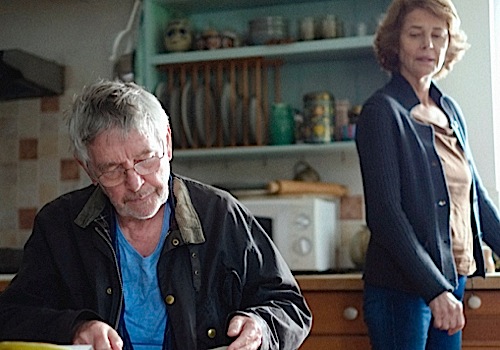
Sometimes it’s better not to ask; sometimes it’s better not to know. For the married couple at the center of 45 Years, the introduction of a person from 50 years ago ends up becoming a ghost in their lives. Like most long-term relationships, the characters in this stripped-down drama are haunted by things from the past that we can’t see, that we can only infer. But in 45 Years, those invisible presences seem to walk the rooms, silent but perceptible. —T.G.
11. Rams

I’m going to tell you what Rams is about, and either you will be interested or not. In a small village in Iceland, two estranged brothers, both shepherds, must decide what to do when the discovery of an infectious disease in the area prompts the government to order them to slaughter their herds. That’s about it. I can understand if you’re tempted to skip to the next film. But if you do, you’ll miss a funny, sad, heartwarming, heart-aching film starring the men with the two best beards in the festival. I’m sure this one won’t be easy to find, but I strongly suggest seeking it out. It’ll be worth the effort. —M.D.
10. Louder Than Bombs
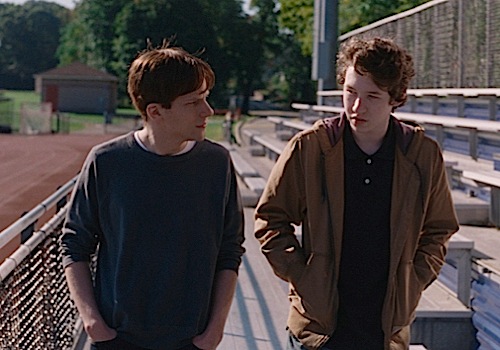
Louder Than Bombs finds the Norwegian director Joachim Trier once again collaborating with cowriter Eskil Vogt to tell an original story that’s part of an old Hollywood awards-season tradition. The enigmatic matriarch of a suburban New York family, acclaimed war photographer Isabelle (Isabelle Huppert), died two years ago in a car crash. Now, a major retrospective of her work will be shown in Manhattan, forcing her widowed husband and two children to reunite and finally confront her legacy and their unhappy lives. From that logline, you can practically see the somber “For Your Consideration” ads. But rather than being manipulative or formulaic, Louder Than Bombs is a smart treatment of material that’s littered with potential booby traps. Weaving together flashbacks with present-day brooding, revealing hurtful family secrets and offering observations on the alienation of modern life, Trier’s film approaches terrain that’s been covered in everything from American Beauty to Little Children to Men, Women & Children. But Louder Than Bombs succeeds because Trier focuses so intently on his characters, avoiding the temptation to offer zeitgeist-y reflections on The Way We Live Today. The movie isn’t a sermon—it’s an expression of one family’s slow grieving process. —T.G.
9. The Witch
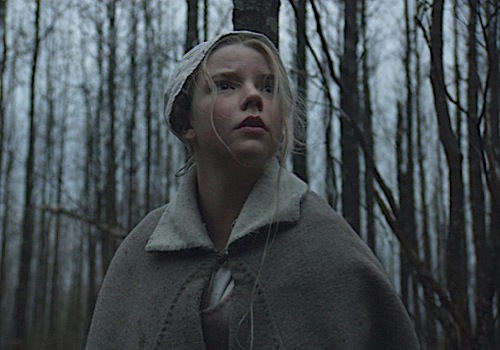
Writer-director Robert Eggers’ Sundance hit is built around a simple but powerful concept: There’s something ominous out there in the woods. The Witch plays on all the elegant fears of our childhood—dark and spooky forests, demonic possession, those invisible terrors that are infinitely scarier than some dude with a meat cleaver—for a tale of a 17th century New England family living in a house in the middle of nowhere. On its most basic level, the film is a story of good and evil, but it’s also a petri-dish examination of how close-knit communities unravel once distrust enters the equation. Ralph Ineson plays the hardheaded patriarch, a devoutly religious man blind to his own shortcomings, but it’s Anya Taylor-Joy who’s the breakout star as his oldest daughter. She knows that a witch is responsible for the slow-motion terror descending upon her family, but first she has to save her brood from themselves. —T.G.
8. Janis: Little Girl Blue

Capturing the life, career, persona and phenomenon that was Janis Joplin in the space of a less-than-two-hours-long documentary is a daunting task. Amy Berg makes a crucially important decision in Janis: Little Girl Blue, opting to let the performances speak for themselves. There’s not a lot of talking head analysis of Janis’ music; Berg instead gives us a few well-chosen, extended clips of that otherworldly voice in action (as well as a good many selections backgrounded in the mix). Berg also focuses on Janis’ inner life, and boy, does that gamble pay off. With the full cooperation of the estate and interviews with many of Janis’ intimates, including her two siblings, the marvelous Dick Cavett, and the one man with whom, in another universe, she surely found lifelong happiness, Berg is able to dig deep into who Janis actually was behind the raucous stage persona. Most effective of all is Chan Marshall (a.k.a. Cat Power), reading from Janis’ diaries and letters with the simple delivery of a born performer. It’s as if Janis is narrating her own life story, and it’s pure magic. —M.D.
7. Beasts of No Nation
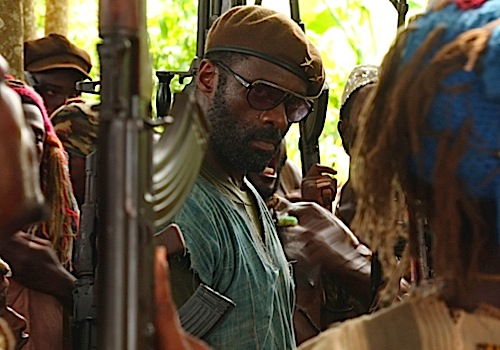
For their first foray into the world of scripted features, Netflix chose a very big film to show on small screens around the country. Directed by Cary Fukunaga, who previously helmed features Sin Nombre and Jane Eyre but is probably best known for last year’s first season of True Detective, Beasts of No Nation is a brutal, unflinching look at the lives of child soldiers in Africa. (The country is intentionally non-specific.) For the first time since The Wire, Idris Elba gets a part worthy of his stature, as a Commandant who is alternately charming and horrifying. (The comparisons to Forrest Whitaker’s Idi Amin in The Last King of Scotland are unavoidable, and not completely unwarranted.) He’s wonderful, and newcomer Abraham Atta as young protagonist Agu is great, as well. But the predictable plotting leaves something to be desired, and what should have been the year’s best film is instead merely a very good one. —M.D.
6. Room
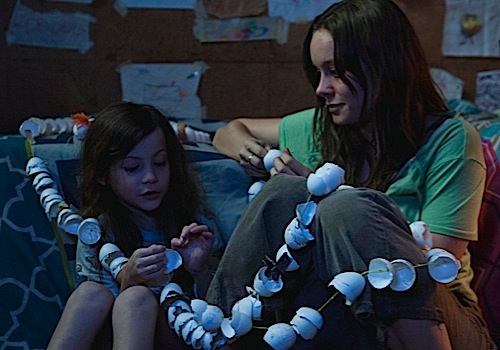
I thought I was going slightly off the beaten path when I declared Room to be my favorite film of TIFF 2015, but apparently a lot of other people agreed with me, as it won the Audience Award. Lenny Abrahamson’s followup to last year’s festival hit Frank is a dark narrative about a woman and her son who have been kept prisoner for seven years by a mysterious man they know only as Old Nick. It’s really two films, one (spoiler alert, kind of) pre-escape and one post-escape—a sticky wicket, but one which Abrahamson manages to pull of with aplomb. Believe the hype on Brie Larson’s performance, which is certainly Oscar-worthy (not her first of that type), but keep an eye out for several fantastic supporting performances too, especially the criminally underrated Sean Bridgers as Old Nick. —M.D.
5. Son of Saul

The true star of Son of Saul is its technical achievement, which is considerable. It’s not simply that Nemes utilizes bravura long takes that are extensively choreographed but utterly naturalistic—it’s that the technique accentuates the immediacy (and, hence, the horror) of the concentration camps. (Every once in a while, Son of Saul almost feels like it’s playing out in real time, with extended sequences drawing suspense from their roughshod urgency.) We’re not shown a world; we’re immersed in it—forced to get our bearings as quickly as possible because the characters aren’t going to waste their breath explaining it to us. Like many fine Holocaust dramas,Son of Saul is so gripping and grueling that it doesn’t necessarily lend itself to multiple viewings. But the offhand complexity of the storytelling leads me to suspect that return trips to this movie will produce deeper revelations about the construction of its story. Even then, though, Son of Saul’s powerhouse finale probably won’t be any less stunning, nuanced or shattering. —T.G.
4. Cemetery of Splendour

There’s no middle ground with Thai director Apichatpong Weerasethakul’s films: You’re either on their poetic, dreamlike wavelength, or you’re not. In his finest movies (Syndromes and a Century, Uncle Boonmee Who Can Recall His Past Lives), the terror and beauty of the everyday gets transmuted into something mystical—his movies can be deliberate and realistic, and yet also quite fantastical, with no clear demarcation between the two plains. Some find Weerasethakul’s movies baffling, slow, tedious. But approach them in the right headspace, and they can be transformative. His latest, Cemetery of Splendor, will require multiple viewings—just as all his films do—so that its thick fog of images, ideas and moods can be properly digested. —T.G.
3. The Lobster
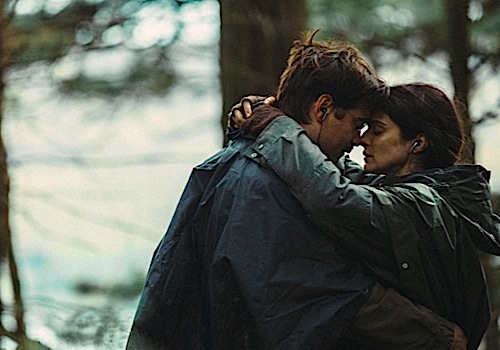
Imaginatively designed but also intellectually bracing, The Lobster sometimes lets its ambitions outrun its execution. (At a little under two hours, it’s a bit long and repetitive in parts.) But the nervous unease that pulses throughout the film lends the story an endless tension and unpredictability: We never have any idea where Lanthimos is going as he constantly throws us fresh surprises about this future world and its code of conduct. But still, there’s a coherence to his vision, the narrative structured around our love-hate relationship with our and other people’s romantic lives. Even at the end of The Lobster, when it seems like Farrell has found true love, we’re not entirely convinced. The movie has systemically taught us to be cynical about the ways we try to win another person’s heart. And then again, we realize: Life has also done a pretty bang-up job on that front as well. —T.G.
2. Mississippi Grind
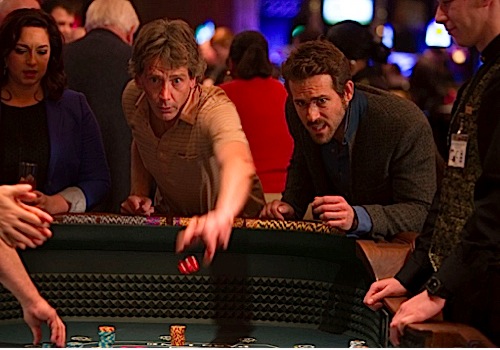
Filmmakers Ryan Fleck and Anna Boden don’t work within genres as much as they wander around inside them. Their Half Nelson took on the inspirational-teacher film, while Sugar had a darker, more realistic perspective on the prototypical sports movie. Repeatedly, the filmmaking duo utilize the tenets of a genre but mostly focus on their characters’ specific desires, opening themselves up to criticism that their movies are too meandering for their own good. But oftentimes, those laid-back, intimate observations are where the most interesting things happen. Perhaps it’s appropriate, then, that Fleck and Boden have finally gotten around to making a Robert Altman film. Altman, of course, was the king of the revisionist genre movie, and Fleck and Boden have taken his underrated 1974 gem California Split as their guide for Mississippi Grind, a low-key but affecting story about two gamblers on a car trip. To be sure, this terrain—addiction, the road movie, the buildup to the big competition—has been explored plenty by other filmmakers. And, yet, moment to moment, Mississippi Grind digs into you. —T.G.
1. Anomalisa
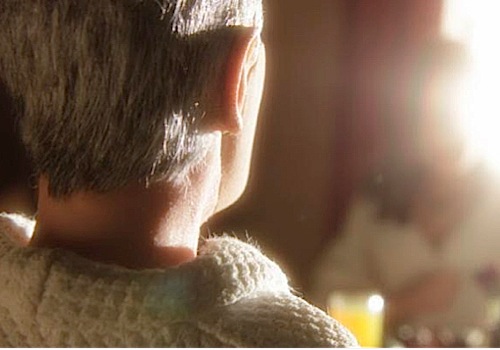
Preciousness and misanthropy have always been the twin hallmarks of Charlie Kaufman’s work, his characters’ misery heightened and sometimes enlivened by the writer-director’s ability to craft clever sci-fi/fantastical scenarios around them. In Eternal Sunshine for the Spotless Mind (which won him a Best Original Screenplay Oscar) or his 2008 directorial debut, Synecdoche, New York, he has managed to make everyday loneliness and the gnawing sense of futility resonate with an almost ineffable sting. In Kaufman’s hands, life looks heartbreaking, and yet it can often be beautiful at the same time. It’s hard to know yet whether Anomalisa is a new peak for Kaufman, or merely another highlight in a distinguished career. But what is clear at this point is that it’s piercingly poignant—perhaps his most succinct expression of the malaise that’s forever haunting his work. Anomalisa doesn’t resolve the issues that have eaten at his characters since his first published screenplay, 1999’s Being John Malkovich, but the honesty with which he depicts those struggles remain startling, even comforting. This movie is life-affirming, not because of any artificial feel-good sentiment, but because it mirrors one’s own mixed feelings about the wonders and horrors of being alive. Plus, it’s really funny. —T.G.